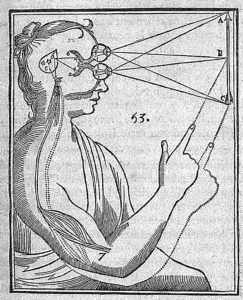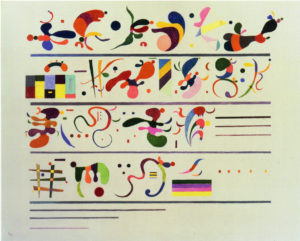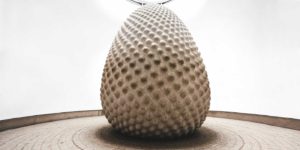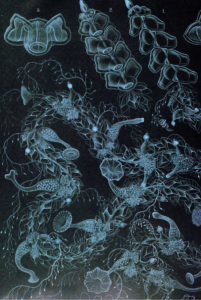
From Rene Descartes, L’Homme 1664
SCIENCE AS THE ARTIST’S MUSE
‘We must concentrate on the details, on the form of the root of a tree, on the way in which a leaf is connected to a stalk, on the structure of the bark…. If we see in this way, an immensely rich new world is revealed to us, full of totally new experience’.
August Endell – Designer, writer, teacher, architect – 1892
For thousands of years, the smallest thing that the human eye could see was a single hair. The idea that all life might be made up of compounds unbelievably tinier than that was not so much made fun of as never considered at all.
But the first microscope changed our world view irrevocably. Suddenly, there were new worlds of living things to discover – in our water, in our food, and on the very skin of our bodies. Science began its inexorable march towards understanding new realms, exploring unseen worlds.
Artists have always been inspired by nature; they give it meaning and definition, using their perception and skill to illuminate the human condition. And central to that condition is the need to explore our sense of place and purpose in the world. In all our worlds.
Nexus Orange is where science and art will together explore these worlds. It’s a hidden and potentially exhilarating source of inspiration for artists, and for the scientists, a rare opportunity to communicate the marvels of the worlds we live in. Expect the unexpected.

Wasilly Kandinsky – Succession – 1935 Oil on canvas 80.9 x 100 cm
Suggests Kandinsky’s preoccupation with biology in the 1930s.

Peter Randall-Page – The Seed – 2007 . Monument carved from 70 tons of Cornish granite. The Core, Eden Project, Cornwall, UK

Ernest Haeckel Siphonophorae in Report on the Scientific Results of the Voyage of HMS Challenger during the years 1873-1876
Siphonophorae live in complete darkness in the deepest ocean. Lacking the need for protection from light, their external and internal structure lack pigmentation.